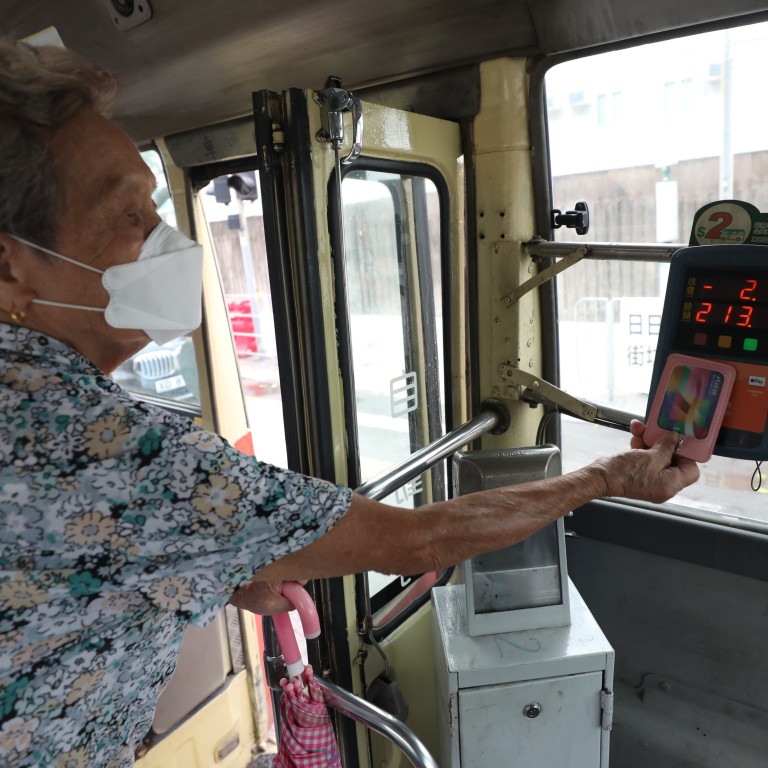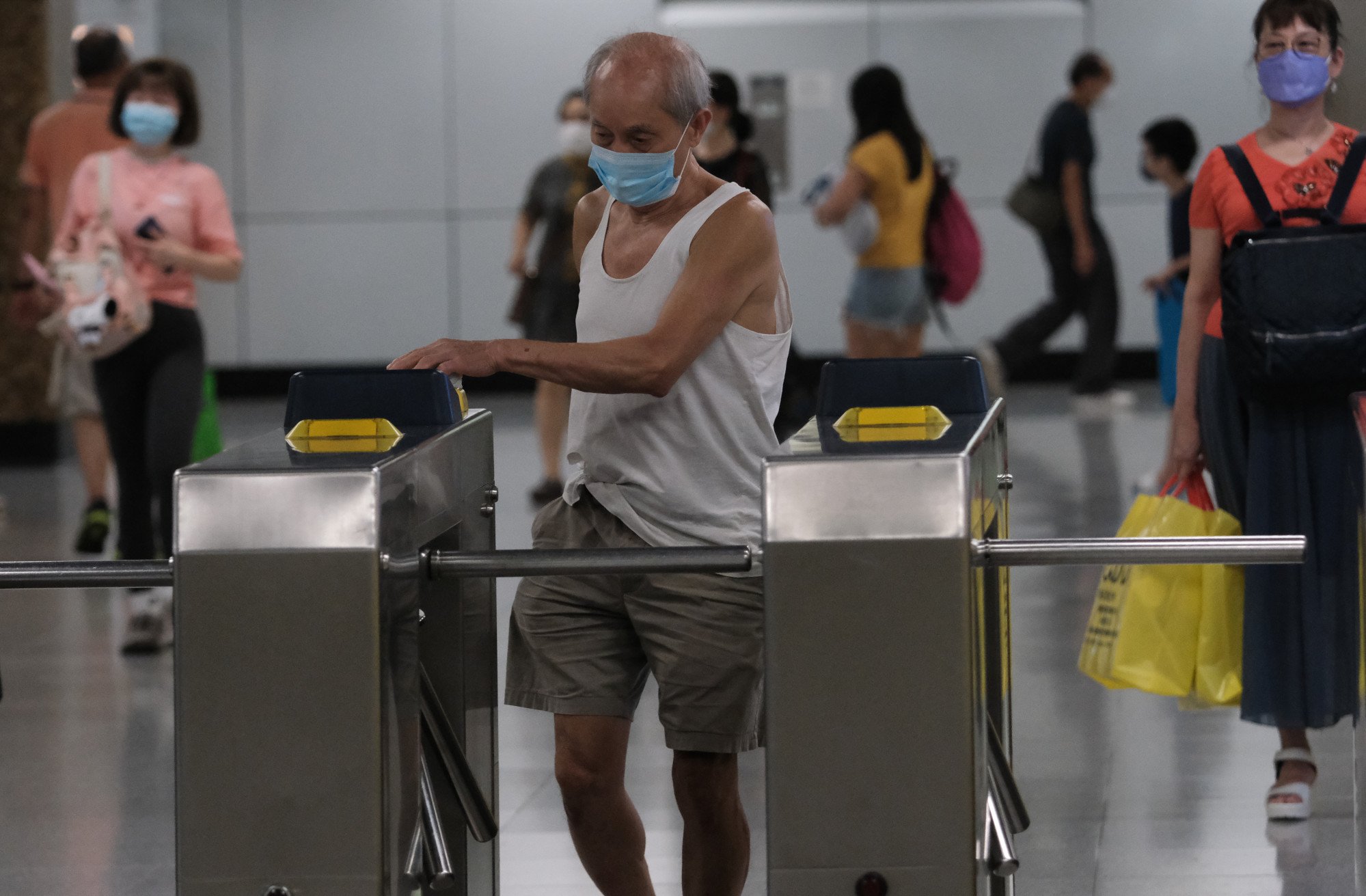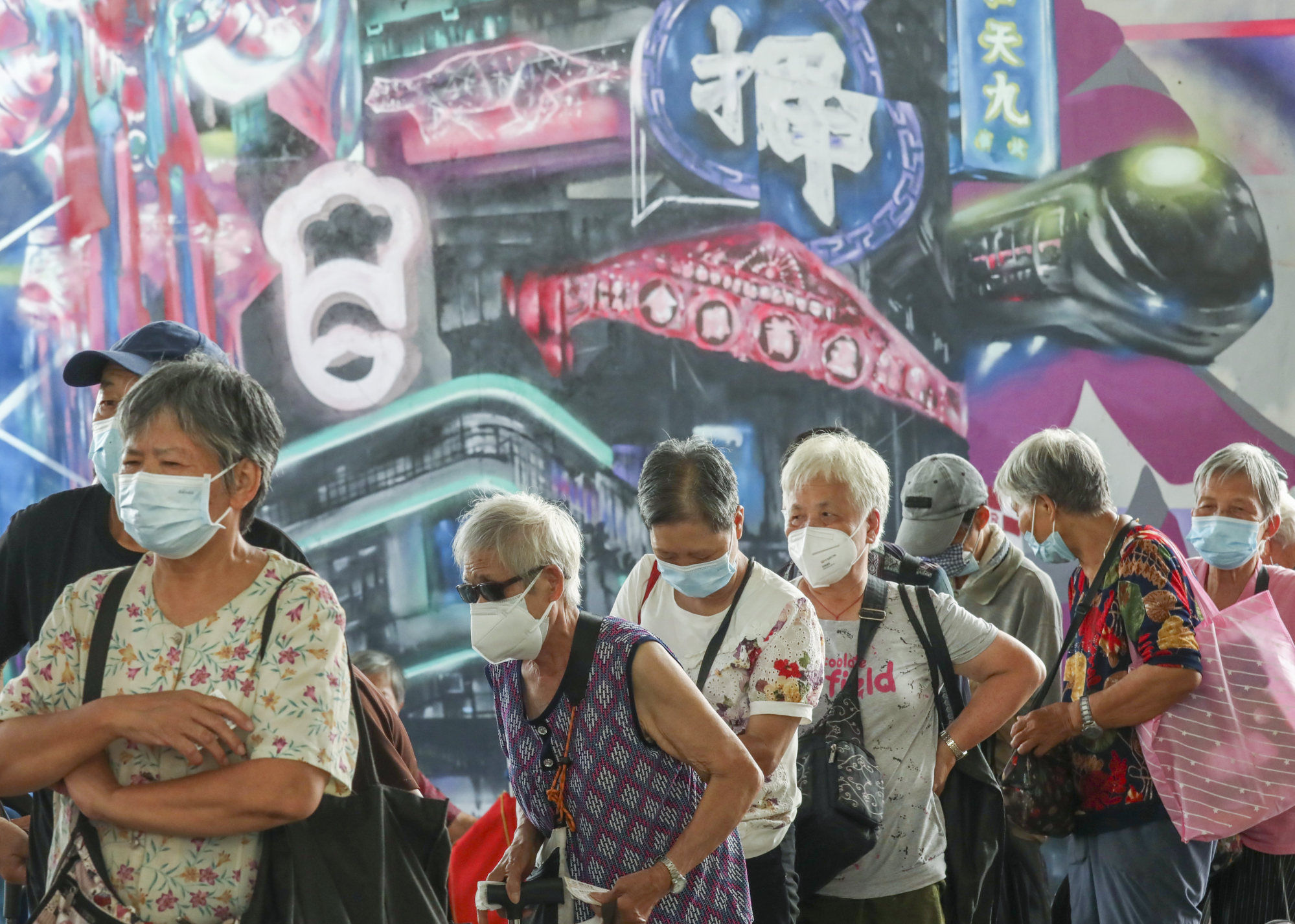
All’s fare on Hong Kong buses and trains? John Lee asks departments to look into spending patterns of commuters under HK$2 transport subsidy for elderly
- Chief Executive John Lee says he understands concerns over scheme, but stopped short of confirming if review was needed
- Some economists, lawmakers argue scheme represents drain on public coffers, while others say encouraging elderly to get out and about is more important
Hong Kong’s leader has tasked government departments with looking into the spending patterns of commuters under a transport subsidy scheme for the elderly and investigating cases of abuse after economists called for a review of the policy and raised concerns about its financial sustainability.
Chief Executive John Lee Ka-chiu on Tuesday told reporters he understood the concerns, but he stopped short of confirming whether a review was needed. Instead, he said the priority should be on investigating cases of abuse under the so-called HK$2 (25 US cents) scheme, which allows elderly residents to travel on designated public transport paying a concessionary fare.
“Looking at some of the cases, there are suspicions [of abuse] and it is important that we step up enforcement actions,” he said. “We should deal with such abuse in a serious manner … We will not tolerate this, and I have asked relevant departments to do their best to enhance law enforcement.”
Lee said the government would, at the same time, step up efforts to educate the public on proper use of the subsidy scheme.
Ageing Hong Kong can’t afford ‘sky’s the limit’ fare subsidy for elderly
Former transport minister Anthony Cheung Bing-leung on Monday reignited public debate over the future of the scheme after he accused the previous government of being “too hasty” in including those aged between 60 and 64 in the policy.
Speaking to local media, Cheung said he had told his colleagues before his departure in 2017 that the government should not adopt proposals by political parties to lower the age threshold of the Public Transport Fare Concession Scheme, arguing it would create additional financial burdens.
The former minister acknowledged there was no reversing the move now and urged authorities to raise the fare to HK$3.
Executive Council convenor Regina Ip Lau Suk-yee and fellow member Chan Kin-por earlier called for the government to scale back the subsidy scheme, fearing it would become financially unsustainable.
Transport cost increases: how much has Hong Kong government shielded commuters?
On Monday, Billy Mak Sui-choi, an associate professor at Baptist University’s department of accountancy, economics and finance, said the crux of the issue was not financial sustainability, but whether government money had been spent wisely.
“So, under the current scheme, we are now subsidising the transport costs of some workers who are as young as 60 years old,” he said. “Should we not use the money to, say, build more homes for the elderly, for the needy?”
Gary Ng Cheuk-yan, a senior economist for Asia-Pacific at Natixis Corporate and Investment Bank, agreed the scheme should be reformed, saying it raised concerns over cost and resource allocation as the fare had remained unchanged for a long time, even amid a period of rising inflation.
“Public transport modes charge users different prices to maximise the carrying capacity, and a flat rate subsidy will often distort such market mechanisms, especially during peak hours,” he said. “Hong Kong should take this chance to reform the system by subsidising in proportion to the actual fare rather than a one-off flat rate.”

Originally introduced in 2012 by then leader Donald Tsang Yam-kuen, the scheme offered subsidised transport fees for residents aged 65 and above, with authorities aiming to encourage older people to take part in more social and community activities.
The reduced age threshold was first floated by Carrie Lam Cheng Yuet-ngor’s government in 2020 and introduced in February 2022, with the estimated number of beneficiaries increasing by about 815,000 people.
The government in 2021 said appropriate adjustments would be made to the fixed rate of HK$2 every five years.
A Legislative Council Secretariat report in 2021 found that the number of beneficiaries had increased by 35 per cent over eight years, reaching 1.5 million in 2020.
Official figures showed government expenditure on the scheme had quadrupled to HK$1.2 billion in 2020 from about HK$296 million in 2012.
A Labour and Welfare Bureau-commissioned consultancy study from 2020 projected that costs could reach HK$8.6 billion by 2031 from an estimated HK$6.9 billion in 2026, with the figures accounting for about 5.5 per cent and 5.3 per cent of each respective year’s social welfare expenditure.
Why is Hong Kong’s inflation so low compared with other global cities?
However, Thomas Yuen Wai-kee, an assistant professor at Shue Yan University’s department of economics and finance, brushed aside suggestions the scheme could put excessive financial pressure on the government and supported retaining it for the time being.
“Even if it will cost the government an extra HK$10 billion a year, it is an insignificant amount for the government. For the shopping voucher scheme alone, this year has already cost the government over HK$30 billion,” Yuen said.
“If the government drops the voucher scheme in the coming years or further reduces the amount of subsidy, the money thus saved should be able to cover the extra cost of the HK$2 scheme.”
Tik Chi-yuen, the city’s sole non-establishment lawmaker, said: “If we can encourage our elderly residents to go out more to meet friends or get around the city to take part in more community activities, it is also a kind of mobilisation of our social capital. It should not be viewed as a financial problem.”

But fellow legislator Scott Leung Man-kwong said he had received mixed responses about the scheme from residents, and urged authorities to review the subsidised amount.
“I heard from residents they have witnessed a lot of seniors taking short rides on long-distance routes during the peak hours, which disrupts their journey time to a certain extent,” he said. “The more stops the bus makes, the longer the journey for other passengers.”
The scheme covered all public buses, meaning elderly passengers could opt for high-fare routes to reach their destinations, he noted.
“There is a big difference in subsidising a HK$4.7 and a HK$11.9 bus route for the elderly. If the elderly pick the more expensive one, the government needs to subsidise more costs, which is wasting public money,” he said.
Gary Zhang Xinyu, vice-chairman of the Legislative Council’s railways subcommittee, echoed Leung’s stance, said commuters under 60 could also use passes for elderly residents while risking minimal punishment.
Those caught abusing the scheme on public buses were only required to pay the difference in fares, while cases involving the city’s railway could result in a surcharge or even prosecution, he said.
Additional reporting by Lilian Cheng


